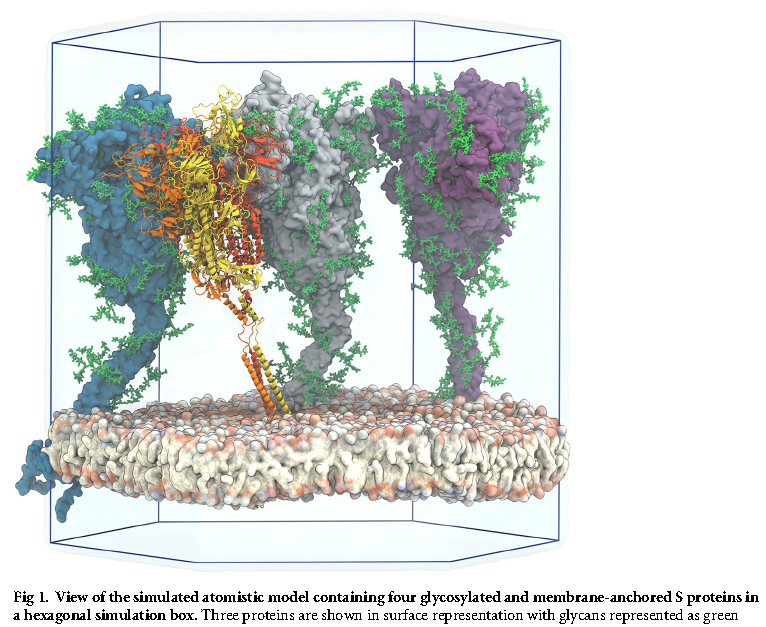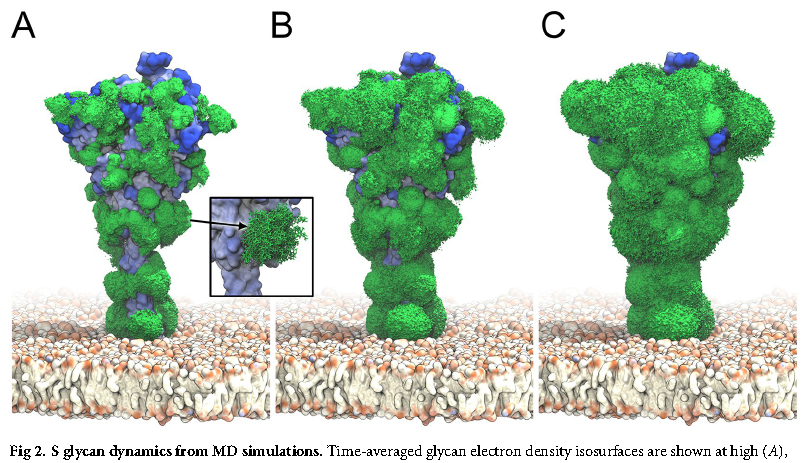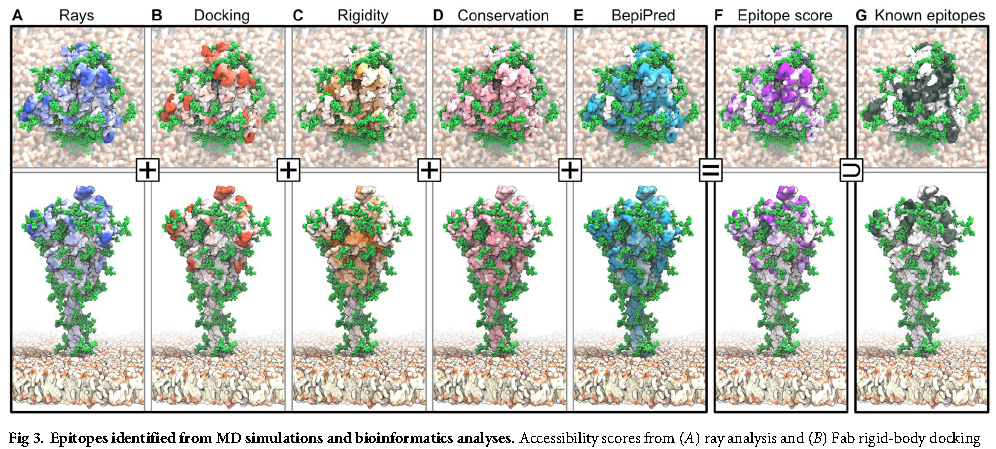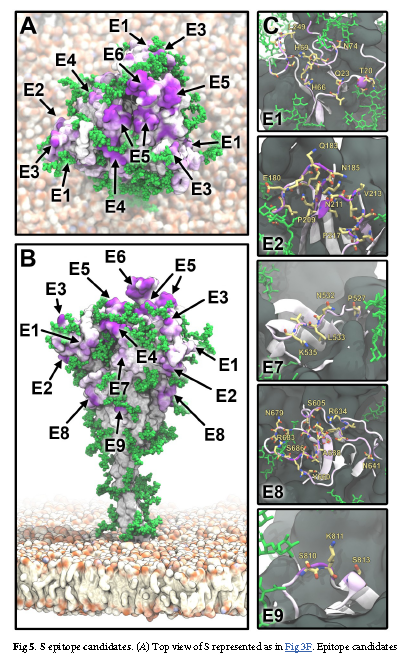博文
SARS-CoV-2突刺蛋白的动态模型揭示了潜在的新疫苗靶标
||
SARS-CoV-2突刺蛋白的动态模型揭示了潜在的新疫苗靶标
诸平





据科学公共图书馆(PLOS) 2021年4月1日提供的消息,德国法兰克福马克斯·普朗克生物物理研究所(Max Planck Institute of Biophysics)、奥地利维也纳大学(University of Vienna)、法兰克福高级研究所(Frankfurt Institute for Advanced Studies)以及 法兰克福歌德大学(Goethe University Frankfurt)合作研究发现,SARS-CoV-2刺突蛋白表面的新的详细模型,揭示了以前未知的漏洞,这些漏洞可能会有助于疫苗的开发。德国法兰克福马克斯·普朗克生物物理研究所(Max Planck Institute of Biophysics)的Mateusz Sikora及其同事,2021年4月1日在开放获取的PLOS Computational Biology杂志网站上介绍了该发现——Mateusz Sikora, Sören von Bülow, Florian E. C. Blanc, Michael Gecht, Roberto Covino, Gerhard Hummer. Computational epitope map of SARS-CoV-2 spike protein. PLOS Computational Biology, 2021; 17 (4): e1008790. Published: April 1, 2021. DOI: 10.1371/journal.pcbi.1008790. https://doi.org/10.1371/journal.pcbi.1008790
SARS-CoV-2是导致COVID-19大流行的病毒。SARS-CoV-2的关键特征是其刺突蛋白(spike protein),该蛋白从其表面延伸并使其能够靶向和感染人类细胞。广泛的研究已经得出了刺突蛋白的详细静态模型,但是这些模型尚未捕获刺突蛋白本身的灵活性,也没有捕获包裹其的保护性聚糖(glycans)的运动。
为了支持疫苗的开发,马特乌什·西科拉(Mateusz Sikora)及其同事旨在在刺突蛋白表面鉴定出新的潜在靶位。为此,他们开发了分子动力学模拟,可以捕获刺突蛋白的完整结构及其在真实环境中的运动。
这些模拟表明,刺突蛋白上的聚糖可充当动态屏障,帮助病毒逃避人类免疫系统的攻击。与汽车刮水器类似,即使在任何给定的瞬间,聚糖的覆盖范围都很小,可以通过来回翻转来覆盖几乎整个刺突表面(spike surface)。
通过将动态刺突蛋白模拟与生物信息学分析相结合,研究人员发现了刺突蛋白表面上受聚糖屏蔽保护最少的斑点。在以前的研究中已经发现了一些检测到的位点,但是有些是新颖的。其他研究小组在随后的实验室实验中证实了其中许多新颖地点的脆弱性。
马特乌什·西科拉说:“由于SARS-CoV-2新变异的出现,我们正处于大流行的阶段,突变特别集中在刺突蛋白中。” “我们的方法可以支持疫苗和治疗性抗体的设计,特别是在已建立的方法难以奏效的情况下。”
为该项研究开发的方法还可以用于识别其他病毒蛋白的潜在漏洞。上述介绍仅供参考,更多信息敬请注意浏览原文或者相关报道。
The primary immunological target of COVID-19 vaccines is the SARS-CoV-2 spike (S) protein. S is exposed on the viral surface and mediates viral entry into the host cell. To identify possible antibody binding sites, we performed multi-microsecond molecular dynamics simulations of a 4.1 million atom system containing a patch of viral membrane with four full-length, fully glycosylated and palmitoylated S proteins. By mapping steric accessibility, structural rigidity, sequence conservation, and generic antibody binding signatures, we recover known epitopes on S and reveal promising epitope candidates for structure-based vaccine design. We find that the extensive and inherently flexible glycan coat shields a surface area larger than expected from static structures, highlighting the importance of structural dynamics. The protective glycan shield and the high flexibility of its hinges give the stalk overall low epitope scores. Our computational epitope-mapping procedure is general and should thus prove useful for other viral envelope proteins whose structures have been characterized.
The SARS-CoV-2 virus has caused a global health crisis. The spike protein exposed at its surface is key for infection and the primary antibody target. However, spike is covered by highly mobile glycan molecules that could impair antibody binding. To identify accessible epitopes, we performed molecular dynamics simulations of an atomistic model of glycosylated spike embedded in a membrane. By combining extensive simulations with bioinformatics analyses, we recovered known antibody binding sites and identified several epitope candidates as targets for further vaccine development.
https://blog.sciencenet.cn/blog-212210-1280065.html
上一篇:为什么某些抗癌药可能无效
下一篇:真菌可以操纵细菌使土壤富含养分